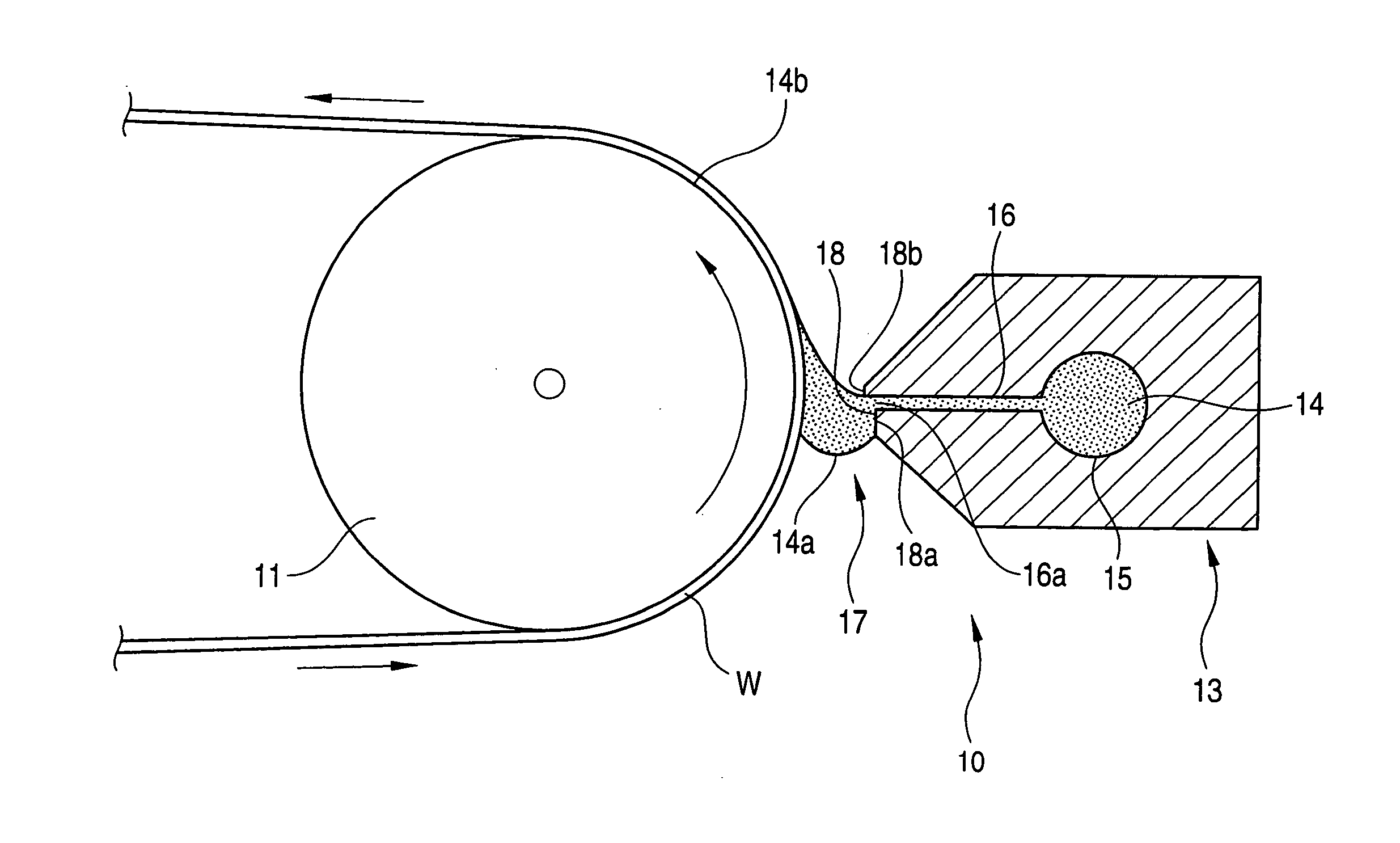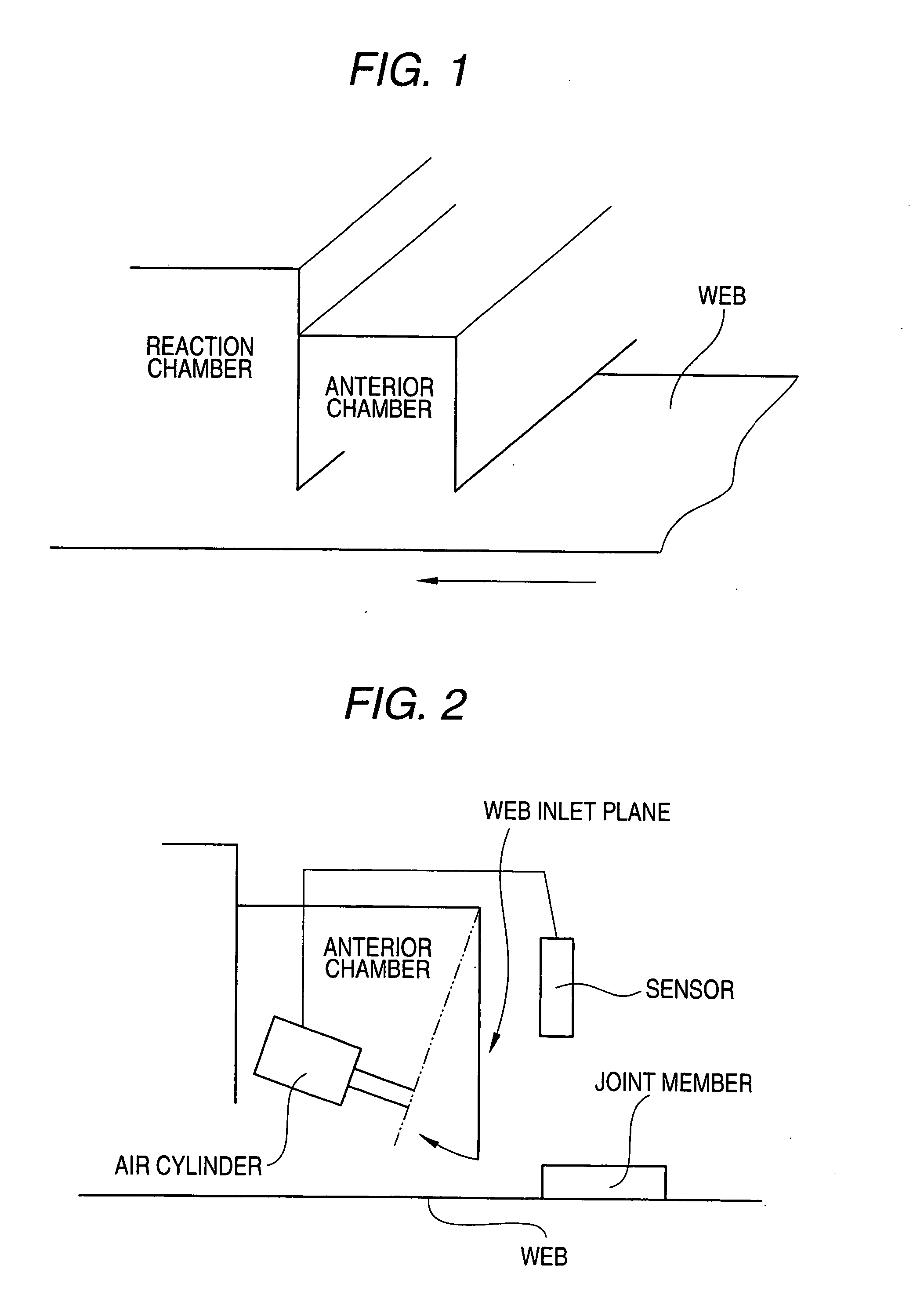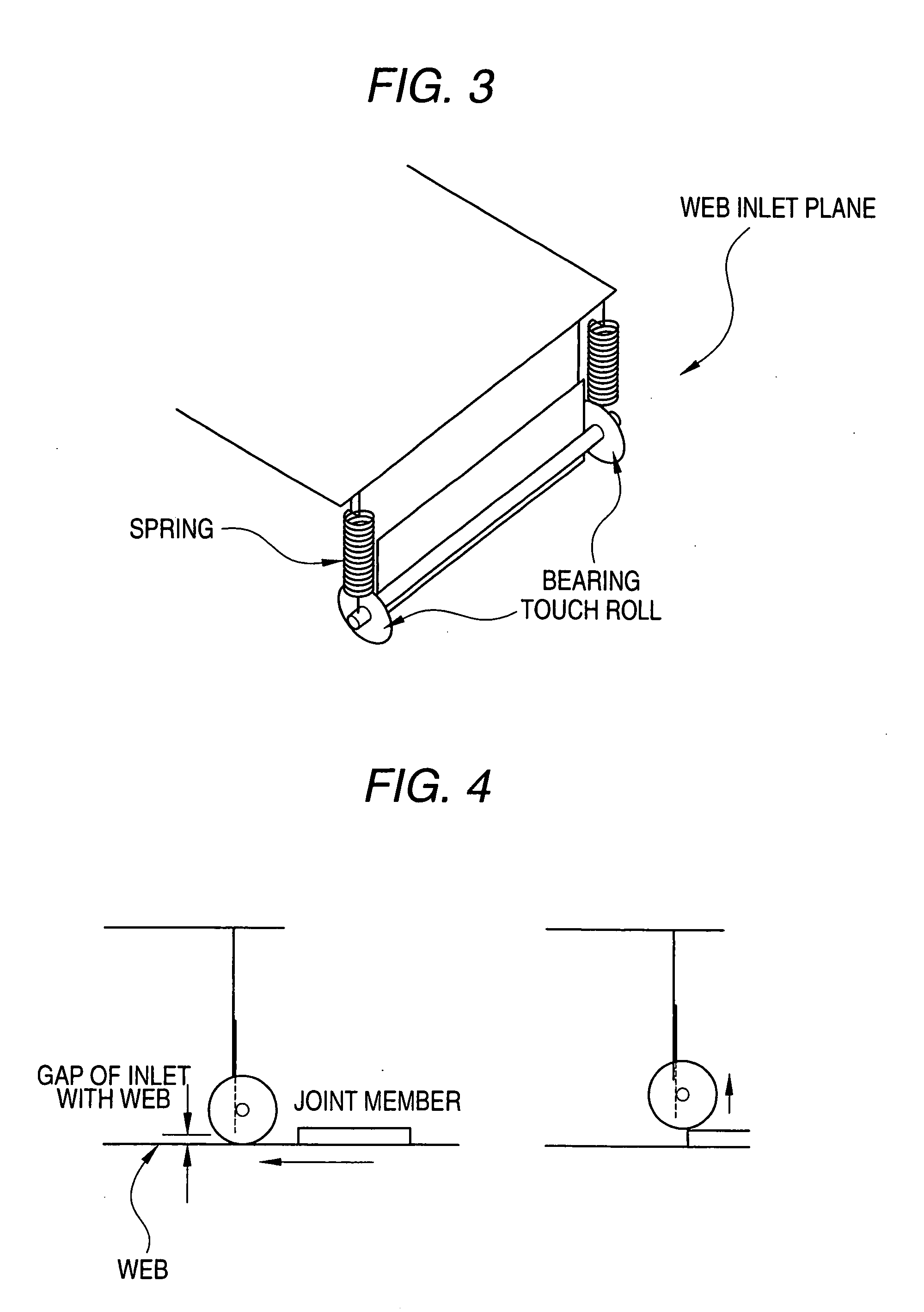Method For Manufacturing An Optical Film, Apparatus For Manufacturing The Same Optical Film, Polarizing Plate And Image Display Device
- Summary
- Abstract
- Description
- Claims
- Application Information
AI Technical Summary
Benefits of technology
Problems solved by technology
Method used
Image
Examples
examples
Examples of Layer Forming Method (I)
Example: A-1
[0508] Hereinafter, the present invention will be explained in detail by referring to the following examples. However, it shall be construed that the present invention is not limited to these examples. Parts are based on mass in present examples.
(Preparation of Coating Solution for Hard-Coat Layer)
[0509] The following compositions were put into a mixing tank and agitated to give a coating solution for hard-coat layer.
[0510] Polyglycidyl methacrylate of mass-average molecular weight 15000, 270.0 parts by mass; methyl ethyl ketone, 730.0 parts by mass; cyclohexanone 500.0 parts by mass and photo polymerization initiator (Irgacure 184, manufactured by Ciba Speciality Chemicals), 50.0 parts by mass were added to trimethyrolpropane triacrylate (Viscoat No. 295 (Osaka Organic Chemical Industry, Ltd.), 750.0 parts by weight and agitated. The resultant was filtered through a polypropylene filter with a pore diameter of 0.4 μm to prepare ...
example-2
[0539] Samples No. 113 through 118 were prepared in the same manner as in the samples No. 102, 103, 104, 105, 108 and 109 of Example A-1, except that they were passed through a nitrogen-replaced zone prior to a UV irradiation zone, and evaluated similarly. The preparing method of samples No. 119 and 120 were different from that of the sample No. 105 of Example A-1 only in that they were passed through a nitrogen-replaced zone prior to a UV irradiation zone. Where a film was to be heated after UV irradiation, heating was conducted by allowing the film after irradiation to contact with a rotating metal roll into which warm water or pressurized steam was passed.
TABLE 3Conditions of nitrogenreplacement zoneprior to UV irradiationConditions of UV irradiationSampleOxygen concentrationPassageOxygen concentrationIrradianceFilmHeatingNo.(% by vol)time (sec)(% by vol)(mJ / cm2)Heatingtemperature (° C.)time (sec)Remarks102——21600Not heated25—Comparativeexample103——0.1600Heated3030Presentinvent...
example-3
[0542] Similar evaluation was made for Example A-3 in which P-1 and P-2 described in the text (equivalent mass replacement) were used respectively in place of fluorine-containing polymers used in the low refractive layer of Example A-1 to 2 to obtain similar effects as those found in Example A-1 to 2.
PUM
| Property | Measurement | Unit |
|---|---|---|
| Temperature | aaaaa | aaaaa |
| Temperature | aaaaa | aaaaa |
| Length | aaaaa | aaaaa |
Abstract
Description
Claims
Application Information
 Login to View More
Login to View More - R&D
- Intellectual Property
- Life Sciences
- Materials
- Tech Scout
- Unparalleled Data Quality
- Higher Quality Content
- 60% Fewer Hallucinations
Browse by: Latest US Patents, China's latest patents, Technical Efficacy Thesaurus, Application Domain, Technology Topic, Popular Technical Reports.
© 2025 PatSnap. All rights reserved.Legal|Privacy policy|Modern Slavery Act Transparency Statement|Sitemap|About US| Contact US: help@patsnap.com



